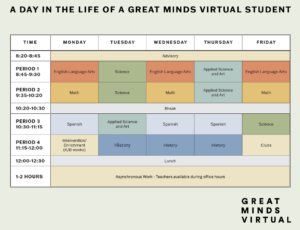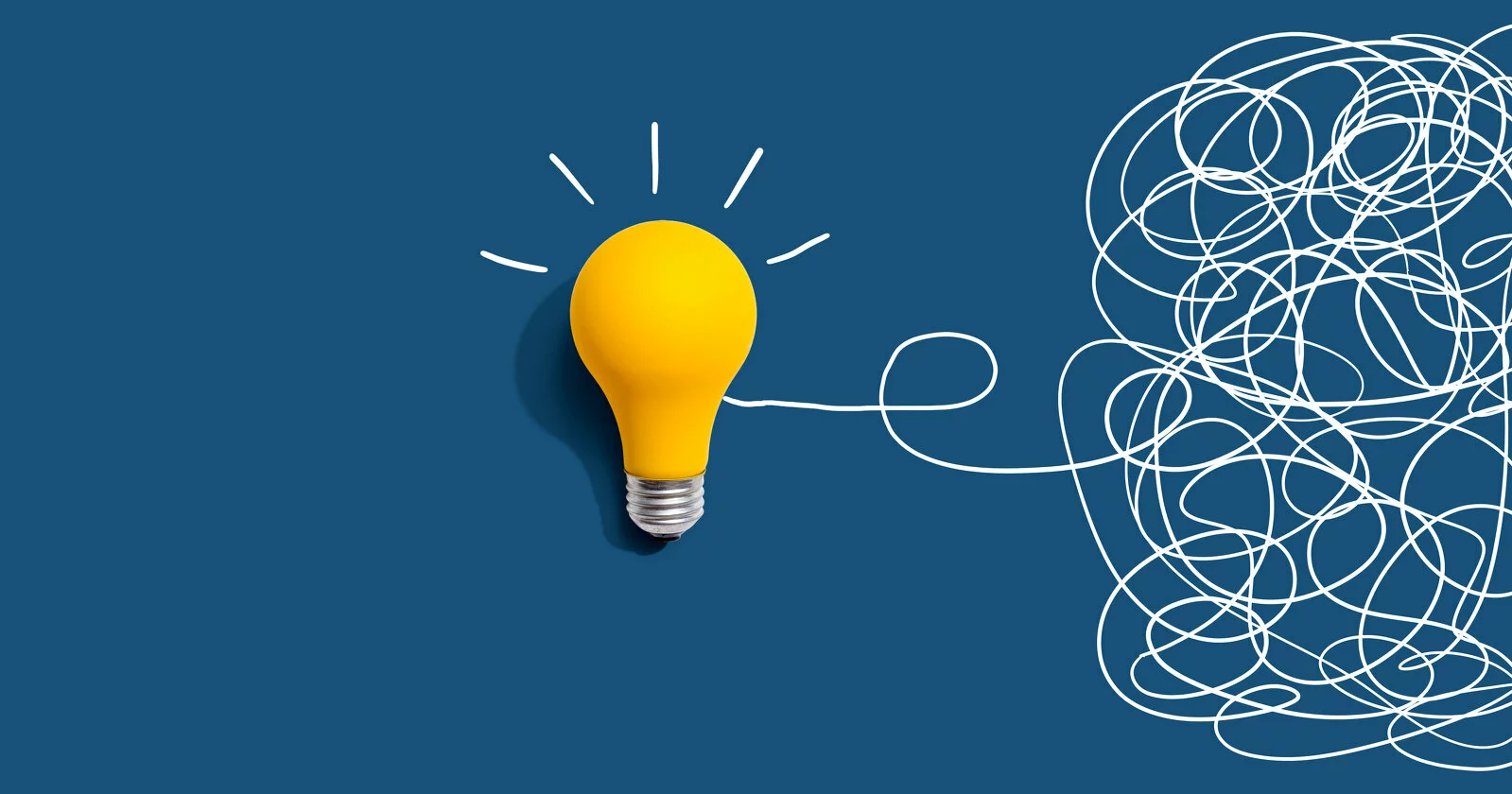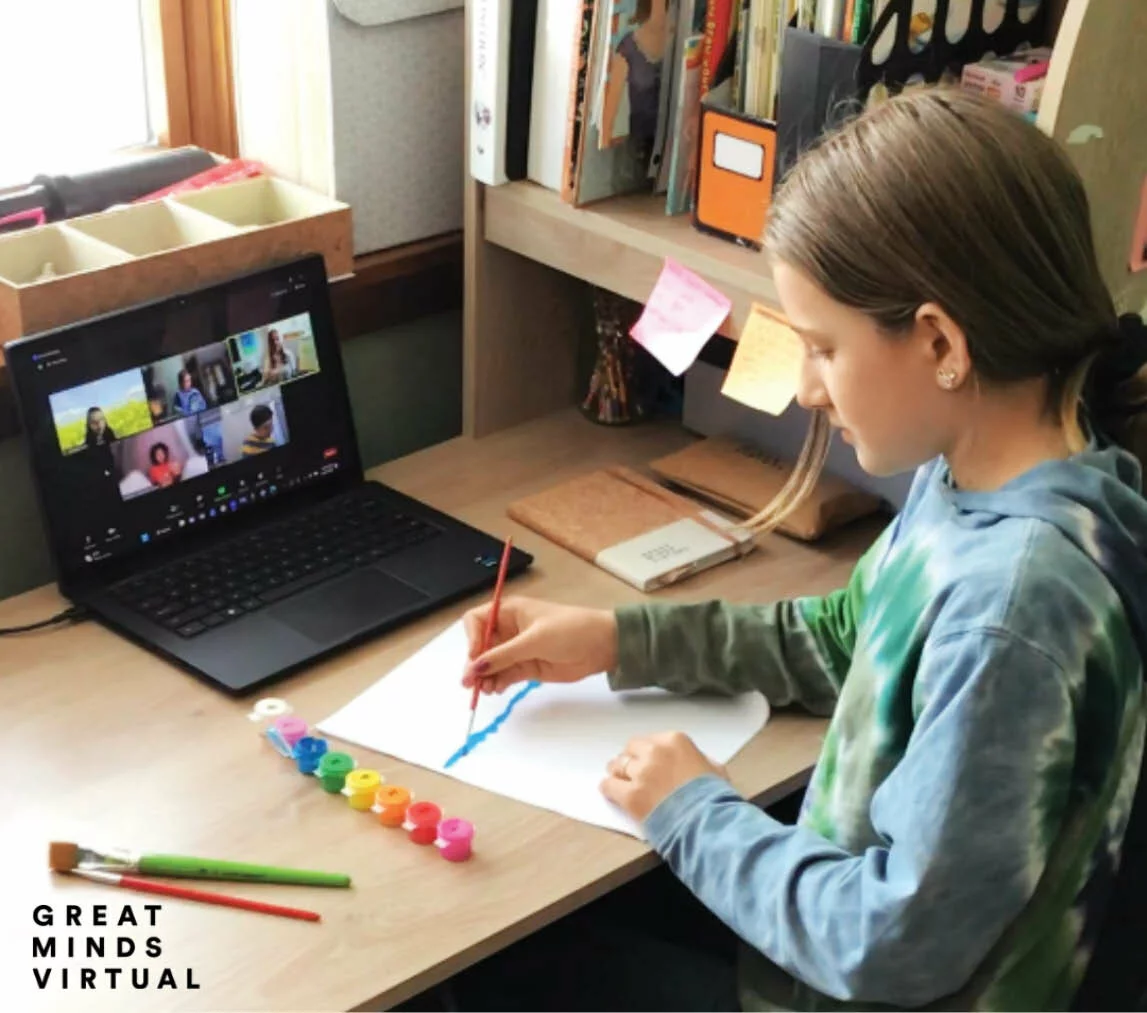As a parent, you might feel like your child spends more waking hours in school than at home. Children’s time at school has an enormous effect on their current well-being and future success—you want to understand how your child spends their school day so you can choose a program that fits your child and family. One of the most frequently asked questions we hear is about the day-to-day life of our students. Read on to learn about our students’ daily routine and experience a day in the life of a Great Minds Virtual student.
At Great Minds Virtual (GMV), we’ve carefully planned a research-based approach to teaching and learning. This ensures that all students are active learners who engage in rich discussions to build knowledge, critical thinking skills, and the competencies needed to collaborate with others. Unlike many other virtual schools, GMV offers primarily synchronous instruction. This means students have a daily schedule for real-time learning and socializing. (If you haven’t already, read our earlier post on the differences between synchronous and asynchronous learning for practical advice on choosing a virtual school.)
Sample student schedule

Small Advisory Groups
Students begin their days in a small community-building advisory session of 6–10 students. Here, they have the opportunity to learn about themselves and their group mates while building close relationships with each other. It’s a chance for them to talk about real-world situations that go well beyond academics, such as making and keeping friends, learning empathy, building leadership skills, resolving conflict, and much more. It’s also where students and teachers discuss, agree upon, and set their classroom norms, expectations, and goals, both group and individual.
Live Lessons
Following advisory, students spend the rest of their morning interacting with peers and teachers in live classes. Students learn in real time through a mix of whole-class instruction—including Socratic seminars (student-led, collaborative discussions)—hands-on activities, and small-group discussions in which they explore open-ended questions tied to what they’re studying. With real-time learning, our teachers can respond in the moment to correct any misconceptions, challenge students to expand their thinking, and encourage peer-to-peer collaboration.
During these live classes, students build deep knowledge of core academic subjects. Here are sample topics from 6th grade courses:
- In English, they’ll learn about resilience in the Great Depression by reading, discussing, and writing about the novel Bud Not Buddy, Langston Hughes’ poetry, and Dorothea Lange’s photos.
- In math, they’ll solve problems to understand ratios, rates, and statistics.
- In science, they’ll conduct experiments that explore thermal energy, plate tectonics, and cells.
- In history, they’ll analyze historical sources to understand independence movements in France and Latin America.
- In Spanish, they’ll build knowledge of other cultures and the world using another language.
Students also take a cross-curricular applied science and art course that connects to their core subjects. For instance, a medical detectives unit will give your 6th grader a chance to learn about advances in medicine, aligned to their science coursework. The 3D modeling unit will be tied closely to what they’re learning in math. The digital photography unit will connect students’ own digital photography to artwork they study in English language arts.
Lunch
Students have a midday break for lunch and free time. They can spend this time independently, with family or friends in person, or with fellow GMV students. Students who choose to socialize with their GMV peers can meet in a small-group video conference, supervised by an adult, to talk informally.
Self-Directed Learning
Later in the day, students work independently—reading, researching, writing, and directing their own learning in ways that build agency and will serve them well as they grow and develop. GMV provides plenty of resources to help families support their child’s independent learning.
During this time, teachers are available for direct support through live office hours or via asynchronous discussion boards. Students and families can request additional support, or teachers might suggest it based on student needs they’ve observed. This personal attention is provided at no cost to families and ensures that every child is challenged and supported to reach their unique potential.
Co-curricular Activities
On Friday afternoons, students participate in co-curricular activities and clubs, giving them more opportunities to explore their interests, work together with peers, and contribute to the school and wider communities. We’ll offer a range of options, aligned to your child’s interests—such as chess clubs, reading groups, painting workshops, coding sessions, and more. Student voice matters to us, and we’ll build these activities around their interests.
Students can also pursue their passions outside of GMV, using the flexibility afforded by the self-directed afternoon schedule and ability to learn from anywhere in a virtual setting. The sky’s the limit for students’ out-of-school pursuits, including competitive sports, performance, community service, and more.
Yearly Calendar
The school year begins in early September and ends in late June, and is organized into three terms. Every term, your child will receive a package of materials: hands-on science kits, art supplies, novels and nonfiction books—everything they need to learn from home and collaborate virtually with their peers.
The school year includes intentional breaks for students, during which teachers plan and engage in professional learning. There are three two-week breaks during the school year: fall break in November, winter break in December/January, and spring break in March. Summer break spans two months in July and August. During these breaks, students can refresh, relax, and explore interests outside of school.
Each day at Great Minds Virtual empowers students to discover their greatness through strong relationships with peers and teachers, academic rigor with support, and personal development of their unique skills and interests.





